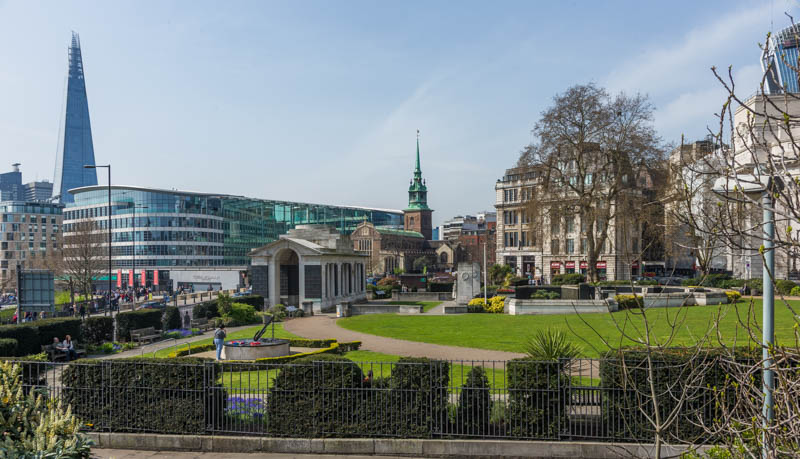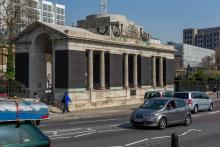London
The Tower Hill Memorial commemorates men and women of the Merchant Navy and Fishing Fleets who died in both World Wars and who have no known grave. It stands on the south side of the garden of Trinity Square, London, close to The Tower of London. The Memorial Register may be consulted at Trinity House Corporation, Trinity Square (Cooper's Row entrance), Tower Hill, London EC3N 4DH, which will be found behind the Memorial. Tel: 020 7481 6900.
In the First World War, the civilian navy's duty was to be the supply service of the Royal Navy, to transport troops and supplies to the armies, to transport raw materials to overseas munitions factories and munitions from those factories, to maintain, on a reduced scale, the ordinary import and export trade, to supply food to the home country and - in spite of greatly enlarged risks and responsibilities - to provide both personnel and ships to supplement the existing resources of the Royal Navy. Losses of vessels were high from the outset, but had peaked in 1917 when in January the German government announced the adoption of "unrestricted submarine warfare". The subsequent preventative measures introduced by the Ministry of Shipping - including the setting up of the convoy system where warships were used to escort merchant vessels - led to a decrease in losses but by the end of the war, 3,305 merchant ships had been lost with a total of 17,000 lives. In the Second World War, losses were again considerable in the early years, reaching a peak in 1942. The heaviest losses were suffered in the Atlantic, but convoys making their way to Russia around the North Cape, and those supplying Malta in the Mediterranean were also particularly vulnerable to attack. In all, 4,786 merchant ships were lost during the war with a total of 32,000 lives. More than one quarter of this total were lost in home waters. The First World War section of the Tower Hill Memorial commemorates almost 12,000 Mercantile Marine casualties who have no grave but the sea. The memorial was designed by Sir Edwin Lutyens with sculpture by Sir William Reid-Dick. It was unveiled by Queen Mary on 12 December 1928. The Second World War extension, which commemorates almost 24,000 casualties, was designed by Sir Edward Maufe, with sculpture by Charles Wheeler. It was unveiled by Queen Elizabeth II on 5 November 1955.





Add new comment